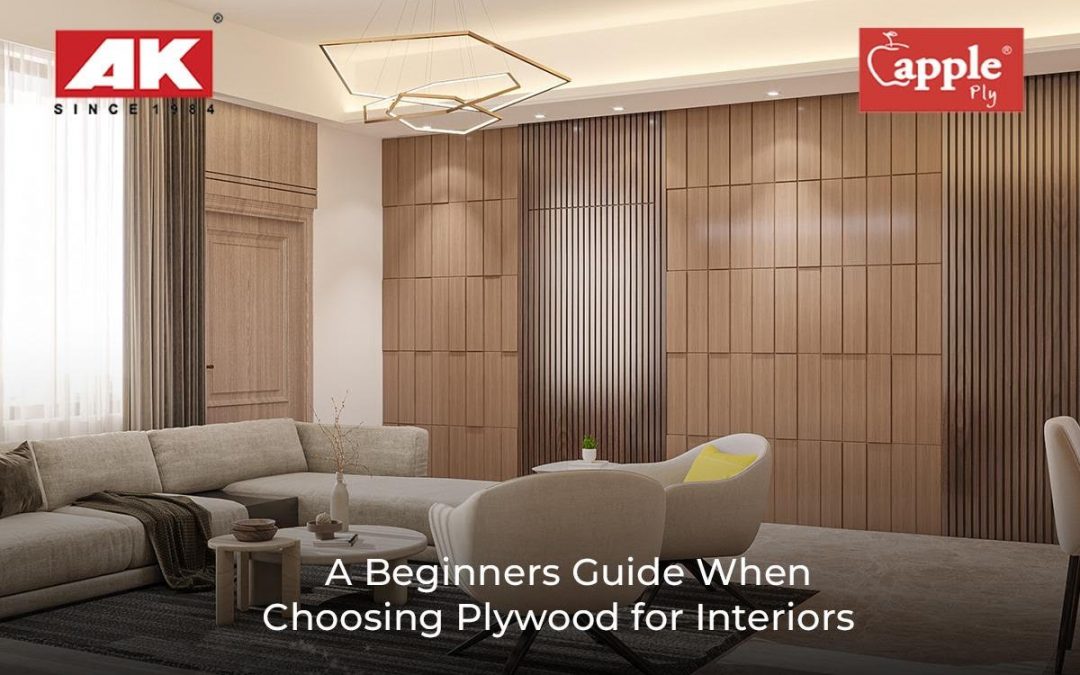Plywood selection is vital when it comes to designing exquisite and long-lasting home interiors and exteriors. Due to its durability and appeal, plywood is an all-in-one solution, whether it is used for storage cabinets, furniture, or other structures.
In this blog, we will discuss some crucial aspects that ought to be considered when choosing the right interior plywood for use in interior design projects.
Understanding Interior Plywood
Interior plywood is made from thin strips of veneer that have been glued together to provide the required thickness. This material is most commonly used in the construction of homes and business establishments, wherein it is utilized for creating cabinets, flooring, panels, and furnishings.
Compared to other plywood products, interior plywood design has numerous advantages, such as high strength and resistance to dimensional changes in environmental conditions within a structure.
Types of Interior Plywood
Understanding the different varieties of interior plywood types allows you to make informed project choices. Here are some common types:
1. Interior Plywood Sheets
Interior plywood sheets are typically offered in various thicknesses and grades and are relatively easy to maneuver. They can be used in almost any wall construction for paneling purposes, shelving, and for developing various types of finished surfaces.
2. Interior Plywood Types
The common types of interior plywood include Schwarz, Goldenentic, Earl, light-colored, Cajuput, Meranti, Bakau, and Iroko. Structural plywood is used widely for construction, marine plywood is used in boat building, and decorative plywood is used for furnishing houses.
Structural plywood is used where the structure of buildings requires additional support, and marine plywood is used where water resistance is needed. There are many different surface appearances to choose from in decorative plywood, including solid veneer, which makes it ideal for furniture and cabinets.
3. Interior Plywood Design
When deciding on plywood for interior projects, one must consider the project’s aesthetic objectives. Painted and laminated plywood should consist of a consistent, level ground, while ecological types characterized by an appealing wood extract are more desirable.
Plywood with more layers will generally be stronger and more rigid, ideal for use where the material will be subjected to considerable stress.
Benefits of Including Interior Plywood for Your Home
Interior plywood design offers numerous benefits, making it a popular choice for diverse creation and indoor design initiatives. Here are some key advantages:
- Versatile Aesthetics: The interior plywood layout offers a wide variety of finishes and timber species to complement numerous indoor patterns and issues.
- Cost-Effective Option: Compared to strong wood, plywood affords comparable aesthetic benefits at a more budget-friendly price point.
- Eco-Friendly Choice: Plywood is made from sustainably sourced wood veneers, making it an environmentally friendly alternative for conscious house owners.
- Easy Installation: Lightweight and clean to paint with, plywood permits for honest setup in numerous indoor applications, lowering installation time.
- Enhanced Durability: Plywood is notably long-lasting, proof against warping, cracking, and bending, ensuring lengthy-lasting performance in furniture and cabinetry.
When it comes to durability, AK Apple Ply’s interior grade plywood undergoes durability testing as per IS 303, enduring 3 cycles: 3 hours in water at 60±2°C followed by drying for 8 hours at 65±2°C, making it both, stylish and durable option for you.
Factors to Consider When Choosing Interior Plywood for Your Home
Choosing the right interior plywood for your home includes considering numerous factors to ensure you get the excellent material for your needs. Here are some vital factors to keep in mind:
1. Grade
Interior grade plywood (MR grade) is classified into three types based on its surface quality: AA, AB and BB. Select the grade for your project depending on your design preferences and budget. Additionally, in terms of formaldehyde class, each grade is classified into two classes: formaldehyde class E1 and formaldehyde class E2. Formaldehyde class E1 is better for interiors, so opting for it would be ideal.
2. Thickness
Plywood is evaluated by its thickness and the type used in the manufacturing process. Thicker plywoods are required for structural purposes, while lighter and more flexible plywoods are preferred for thin work pieces.
3. Core Material
Plywood’s constituents can vary, and its durability may depend on the type of wood used. The most widely used core material is Hardwood, softwood and other composite materials.
4. Budget
Before opting for interior plywood, you need to consider your budget. Even though using high-quality plywood will cost more than the discount option, it is worth the investment since it will be more durable and last longer.
Also Read : Breaking Boundaries: How Flexible Plywood Revolutionizes Interior Design and Furniture Making
Elevate Your Home With Interior Plywood Design Sheets
Selecting a good interior plywood is critical when constructing interiors, where a durable and aesthetically appealing appearance is required. When deciding on a piece of furniture, a cabinet, or some elaborate accessory, it is always crucial to choose the right plywood to guarantee its functionality and appearance.
If you are looking for a wide selection of interior plywood and top-notch consulting services, your best bet is AK Apple Ply! Visit AK Apple Ply and check out the various interior plywood options available to help you achieve your interior’s full potential.




